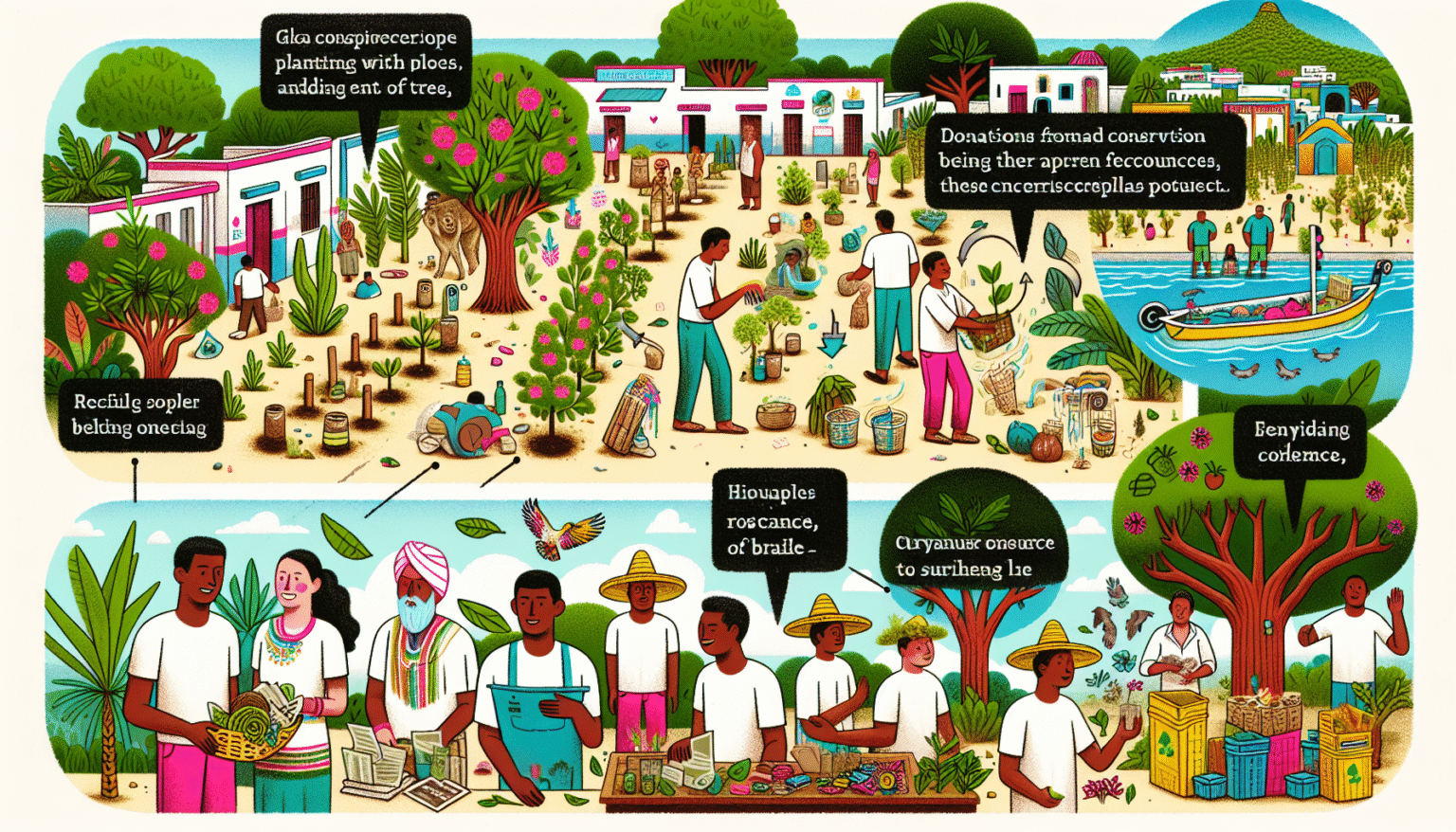How Donations Fuel Community-Based Conservation in Tulum
Understanding Community-Based Conservation
Community-based conservation (CBC) engages local communities in the preservation of natural resources and ecosystems. In Tulum, a town on the Caribbean coast of Mexico, rapid tourism growth poses significant environmental challenges. CBC initiatives empower residents to take an active role in conservation efforts, ensuring that local ecosystems are protected while balancing economic interests.
The Importance of Donations
Donations play a crucial role in the success of community-based conservation projects. They provide the necessary resources for various initiatives, including restoration projects, educational programs, and sustainable economic alternatives. Philanthropic contributions can come from individuals, corporations, and non-profit organizations that recognize the value of maintaining Tulum’s unique environment.
Types of Conservation Projects Funded by Donations
1. Marine Conservation Initiatives
Tulum is home to a diverse range of marine ecosystems, including coral reefs and mangroves. Donations help fund marine conservation efforts, such as:
- Coral Reef Restoration: Volunteers and scientists work together to restore degraded coral reefs, ensuring the survival of marine biodiversity.
- Mangrove Replanting: Mangroves are crucial for coastal protection and biodiversity. Community initiatives funded by donations focus on replanting mangroves along Tulum’s coastline.
2. Wildlife Protection Programs
The region’s flora and fauna are under constant threat from habitat destruction and poaching. Donations facilitate:
- Monitoring and Research: Funds support research efforts to track wildlife populations and understand their patterns, which are essential for effective conservation strategies.
- Rescue and Rehabilitation: Donation contributions can provide resources for the rescue, rehabilitation, and release of endangered species, such as sea turtles, into their natural habitats.
3. Sustainable Tourism Practices
Community workshops and educational programs promote sustainable tourism practices among locals and visitors. Donations help implement:
- Eco-Tourism Training: Local guides are trained to lead eco-friendly tours that educate tourists while promoting conservation principles.
- Sustainable Business Support: Funds are directed toward initiatives that help businesses adopt sustainable practices, thus reducing their ecological footprint.
Collaborations and Partnerships
Effective CBC in Tulum often involves collaborations between various stakeholders, including NGOs, local government, and community members. Donations can significantly enhance these partnerships by providing resources for joint projects. Notable collaborations include:
- Local NGOs: Organizations such as the “Tulum Conservation Initiative” are crucial for executing community-led projects. Donations enable them to create educational materials and fundraising campaigns to raise awareness.
- Academic Institutions: Partnerships with universities for research initiatives supported by donations lead to better conservation strategies based on scientific findings.
Engaging the Community
A cornerstone of successful community-based conservation is involving community members. Donations are vital for:
- Organizing Workshops: Funds allow for the organization of workshops that teach sustainable practices, the importance of biodiversity, and how to engage in conservation efforts.
- Incentive Programs: Donations can fund incentive programs that encourage eco-friendly behavior among residents, such as reducing waste or participating in community clean-up initiatives.
The Role of Technology in Conservation
Innovations in technology enhance the effectiveness of conservation efforts. Donations contribute to:
- Monitoring Systems: Funds are used to develop and implement monitoring systems that track wildlife populations and habitat health through the use of drones and remote cameras.
- Public Awareness Campaigns: Technology aids in raising awareness through social media campaigns, informational websites, and mobile applications that provide real-time data about conservation initiatives and their impacts.
Success Stories
Several successful stories have emerged from Tulum’s community-based conservation efforts funded by donations:
- The Sea Turtle Conservation Program: Supported by donations from tourists and local businesses, this program has significantly increased the survival rates of hatchling sea turtles through protective hatcheries and public education.
- Coral Reef Protection Initiatives: Initiatives funded by donations have led to the creation of marine protected areas near Tulum, which are critical for maintaining biodiversity and promoting sustainable fishing practices.
The Impact of Tourism on Donations
As tourism continues to grow in Tulum, so does the potential for donations. Eco-conscious tourists often seek ways to give back to the communities they visit. Local organizations target this demographic by:
- Creating Donation Platforms: Easy-to-use websites enable tourists to donate directly to conservation projects.
- Incorporating Donations into Tours: Many tour operators include a donation option for guests, where a portion of the tour fee contributes to local conservation projects.
Challenges and the Way Forward
Despite the positive impact of donations, challenges persist, including:
- Dependence on External Funding: Reliance on donations can lead to instability in project financing. Establishing sustainable revenue models, such as conservation-focused tourism, can help mitigate this issue.
- Community Engagement: Ensuring that all community members understand the benefits of conservation initiatives is essential. Continued education and involvement are critical to fostering long-term commitment.
The Future of Community-Based Conservation in Tulum
As Tulum faces increasing ecological pressures, the role of donations in community-based conservation will continue to be vital. By engaging the local community, fostering partnerships, and leveraging technology, Tulum can become a model for sustainable tourism and conservation efforts worldwide.
Overall, donations serve as the lifeblood of community-based conservation in Tulum, empowering locals to protect their environment while fostering a culture of sustainability that extends beyond ecological concerns. Through collaborative efforts and shared aspirations, Tulum’s community-driven initiatives demonstrate how conservation can align with community well-being, benefiting both residents and visitors alike.







